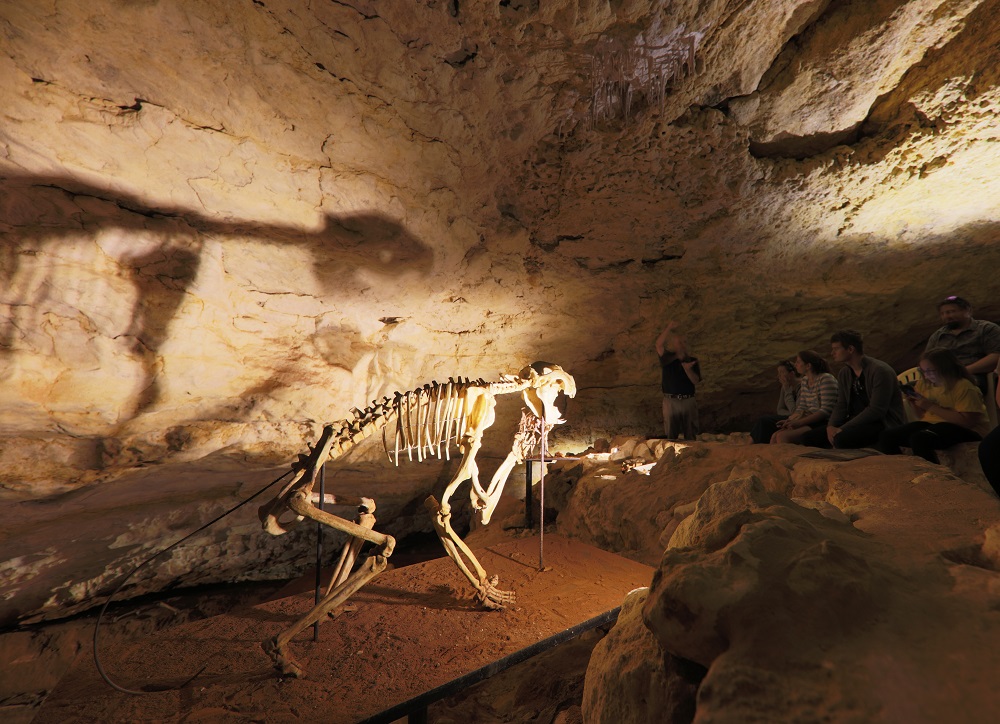A Rolls-Royce record of biodiversity

As the morning sun illuminates the parched bush surrounding Naracoorte in South Australia’s southeast, the locals start coming to life. Lizards and snakes slither out to bask in its warmth and kangaroos hop out of sight while parrots screech in an excited flurry of activity. Koalas open their eyes and munch on eucalyptus leaves before drifting lazily to back to sleep.
Below ground things are quieter, but, for palaeontologists such as Liz Reed, no less exciting. The remains of long-gone animals – including extinct giant kangaroos (such as Procoptodon goliah), huge monitor lizards (Varanus priscus) and marsupial lions (Thylacoleo carnifex) – lie in a meandering network of caves, preserved by layers of sand.
These are some of the Earth’s richest, most detailed records of times gone by – the reason why the Naracoorte Caves earned a world heritage listing 25 years ago, fortifying its attraction for tourists. “It’s kind of the Rolls-Royce record of biodiversity,” says Reed, from the University of Adelaide’s Environment Institute.
Published by Cosmos Magazine print edition no. 84, Spring 2019, page 39.

